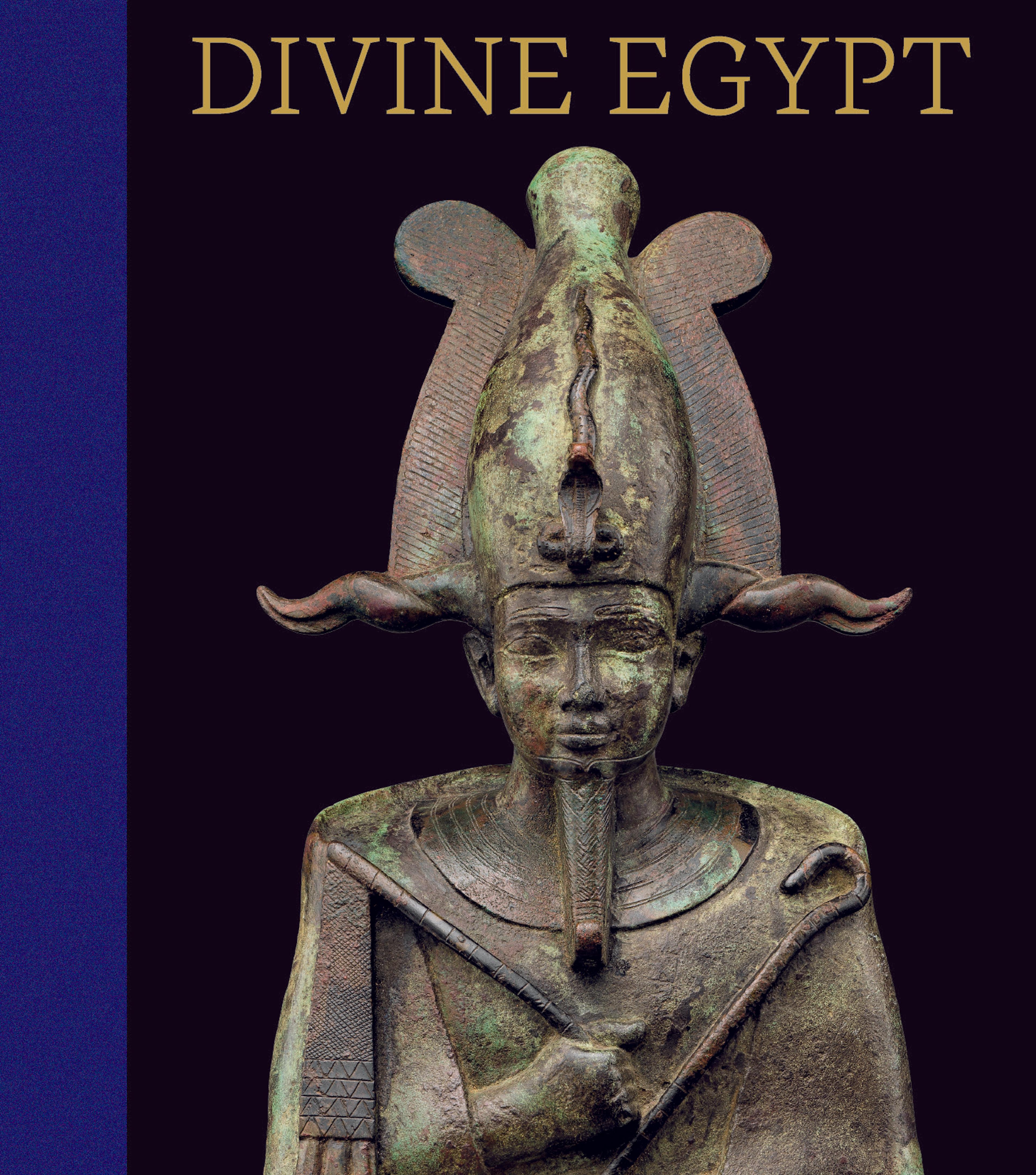Pectoral with bovine head crowned with disk, horns and feathers
Beneath a frieze of uraei held up by Hathor columns, a bovine face peers out. The head is mounted on a collar to form an aegis, and the animal wears a disk and long straight horns with two curling plumes. Also mounted on the aegis collar are two uraei that turn inward toward the bovine. Two other large uraei crowned with disk and horns flank the central unit. On the back are four large rings that would permit mounting.
The pectoral belongs to a group that seems to be associated with the sacred Apis bull and the Mother of Apis cow; some of the bovines, although not this one, actually bear the triangular forehead marking of the Apis, although the crown worn is usually associated with a female goddess. A scholar has noted that the association of the frontal image and the structure suggest an event in the life of the Apis or the Mother of Apis. The canopy formed by the uraeus frieze and the Hathor columns resembles the rolling shrine in which the mummy of a deceased Apis is escorted to burial. Alternatively, the structure might represent the appearance of an Apis, led out and displayed for the first time after a new holy animal has been recognized by the priests. Similarly the appearance of the head as part of an aegis - more common among but not restricted to goddesses - might suggest a new Mother of Apis, assimilated to Isis, appearing for veneration at the time a new steer was installed.
The pectoral belongs to a group that seems to be associated with the sacred Apis bull and the Mother of Apis cow; some of the bovines, although not this one, actually bear the triangular forehead marking of the Apis, although the crown worn is usually associated with a female goddess. A scholar has noted that the association of the frontal image and the structure suggest an event in the life of the Apis or the Mother of Apis. The canopy formed by the uraeus frieze and the Hathor columns resembles the rolling shrine in which the mummy of a deceased Apis is escorted to burial. Alternatively, the structure might represent the appearance of an Apis, led out and displayed for the first time after a new holy animal has been recognized by the priests. Similarly the appearance of the head as part of an aegis - more common among but not restricted to goddesses - might suggest a new Mother of Apis, assimilated to Isis, appearing for veneration at the time a new steer was installed.
Artwork Details
- Title:Pectoral with bovine head crowned with disk, horns and feathers
- Period:Late Period–middle Ptolemaic Period
- Date:664–200 BCE
- Geography:From Egypt
- Medium:Cupreous metal, carnelian
- Dimensions:H. 14.6 × W. 16 × D. 4 cm (5 3/4 × 6 5/16 × 1 9/16 in.)
- Credit Line:Purchase, Joseph Pulitzer Bequest, 1959
- Object Number:59.83
- Curatorial Department: Egyptian Art
More Artwork
Research Resources
The Met provides unparalleled resources for research and welcomes an international community of students and scholars. The Met's Open Access API is where creators and researchers can connect to the The Met collection. Open Access data and public domain images are available for unrestricted commercial and noncommercial use without permission or fee.
To request images under copyright and other restrictions, please use this Image Request form.
Feedback
We continue to research and examine historical and cultural context for objects in The Met collection. If you have comments or questions about this object record, please contact us using the form below. The Museum looks forward to receiving your comments.
